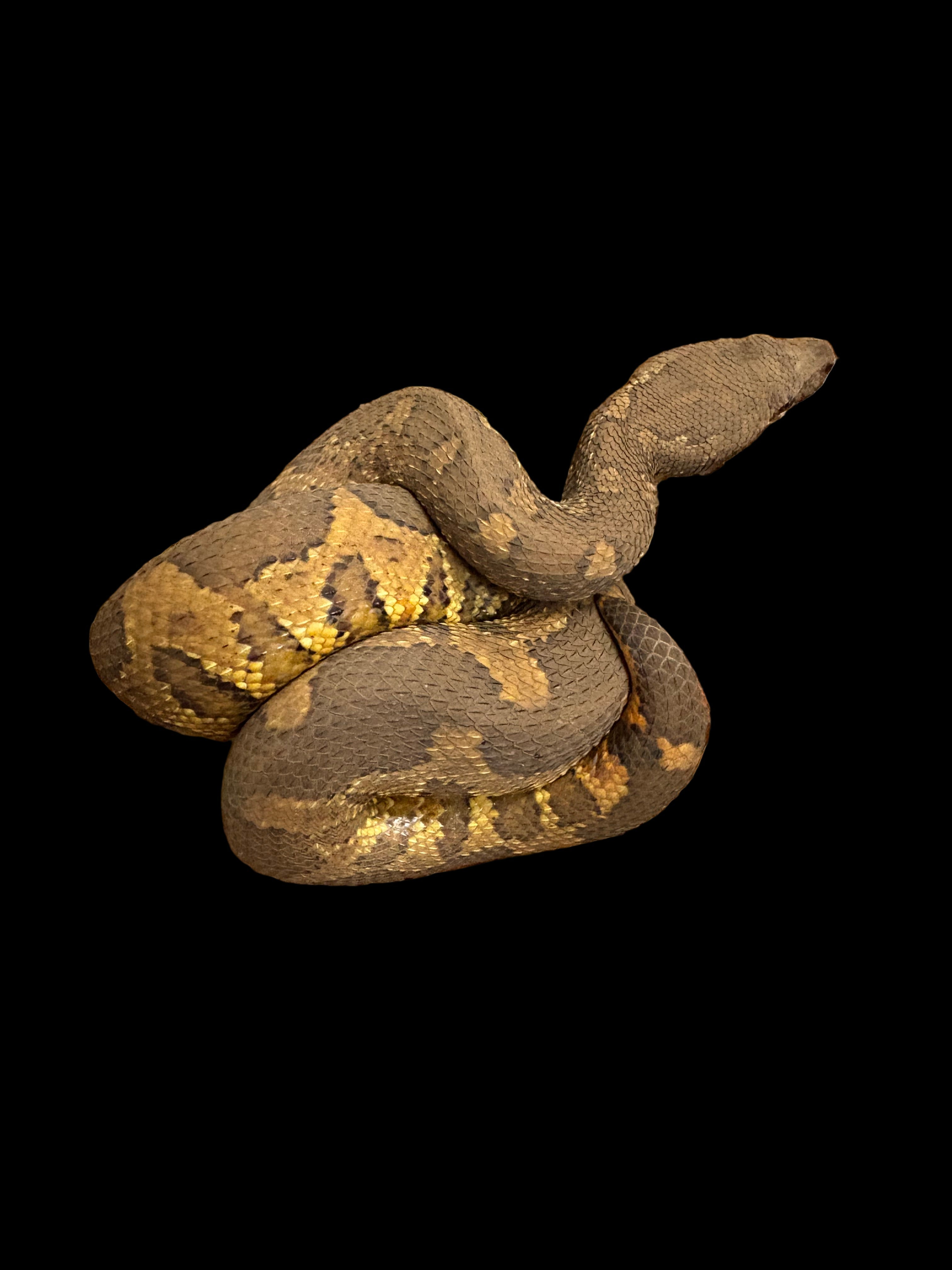Photo Disclaimer
Description
Viper Boa
Candoia aspera
Common Names: Viper Boa
Species Overview
-
Size: Adults generally reach 3–4 feet (0.9–1.2 m), with females typically larger and bulkier than males.
-
Appearance: Named for their resemblance to vipers, these boas have a short, heavy body, broad triangular head, and keeled scales that give them a rough texture. Colouration ranges from dark brown, reddish, and orange to nearly black, often with irregular blotching or banding. This cryptic pattern provides excellent camouflage in leaf litter and muddy ground.
-
Distribution: Native to New Guinea, the Bismarck Archipelago, and parts of the Solomon Islands.
-
Habitat: Found in swampy forests, coastal lowlands, and wetlands, often near water. They are primarily terrestrial and spend much of their time on the ground or partially submerged.
-
Behaviour: Viper boas are ambush predators, lying concealed in mud, leaf litter, or shallow water to strike passing prey. They feed on rodents, birds, lizards, and amphibians. Known for being more sluggish than many boas, they rely on stealth and camouflage rather than speed.
Captive Care
-
Enclosure: A secure enclosure with ample floor space rather than height. A 36″ × 18″ × 18″ (90 × 45 × 45 cm) setup is suitable for adults. Provide multiple hides and a large water dish for soaking.
-
Temperature & Humidity: Maintain ambient temps of 78–82°F (25–28°C) with a warmer basking area around 85–88°F (29–31°C). Nighttime drops to 72–75°F (22–24°C) are acceptable. Humidity should be kept high, around 70–90%, with misting and adequate ventilation to prevent respiratory issues.
-
Diet: In captivity, viper boas can be fed rodents of appropriate size every 10–14 days. Wild specimens may initially prefer amphibians or lizards, but most can be transitioned to rodents with consistency.
-
Behaviour in Captivity: Viper boas are typically secretive and sedentary. They are not overly active and can be defensive when stressed, though many settle into calm captives with time.
-
Special Considerations: This species requires high humidity and access to soaking water. Without these, they are prone to dehydration and shedding issues.
Species Note
The Viper Boa (Candoia aspera) is part of the genus Candoia, which includes several smaller, island-dwelling boas native to the Pacific. Unlike many boas, they are strongly tied to wetland habitats and display unique keeled scaling that sets them apart from other species in the hobby.

